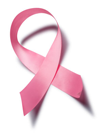Breast cancer communications often play by the wrong rulebook
Breast cancer communications often feature cues that refer to a woman’s gender identity, such as pink backgrounds, pink ribbons, or simply other women. In a recent study, Associate Professor <link people stefano-puntoni _blank>Stefano Puntoni and his colleagues found that such gender cues may actually be counterproductive. Rather than raising awareness about breast cancer, they can trigger a defensive reaction that makes women feel less vulnerable to the disease.
 Together with Dr. Steven Sweldens of INSEAD and Professor Nader Tavassoli of the London Business School, Puntoni conducted a series of experiments to determine the impact of women’s exposure to breast cancer communications in situations where their gender was either especially salient or not.
Together with Dr. Steven Sweldens of INSEAD and Professor Nader Tavassoli of the London Business School, Puntoni conducted a series of experiments to determine the impact of women’s exposure to breast cancer communications in situations where their gender was either especially salient or not.
‘Breast cancer is one of the leading causes of death, and alerting women to their vulnerability will be critical for governments and charities around the world,’ said Dr. Sweldens. ‘Our research shows that breast cancer communications that feature prominent gender cues activate a defensive “it cannot happen to me” reaction in women.’
Puntoni added: ‘These defensive mechanisms interfere with key objectives of breast cancer campaigns. For example, they lower women’s perceived vulnerability to breast cancer, reduce their donations to ovarian cancer research, make breast cancer advertisements more difficult to process, and decrease memory for breast cancer advertisements.’
‘Our findings run counter to the prevailing beliefs in the advertising industry,’ said Professor Tavassoli. ‘Breast cancer campaigns should avoid using gender cues such as images of a woman covering her breast as they are less effective when placed in media contexts that make women reflect on their own gender, like websites or on TV channels dedicated to more female themes. Communications boosting women’s sense of self worth can help to overcome the defensive reactions and increase the effectiveness of breast cancer campaigns.’
‘Gender Identity Salience and Perceived Vulnerability to Breast Cancer’ is featured in the June 2011 issue of the Journal of Marketing Research.


